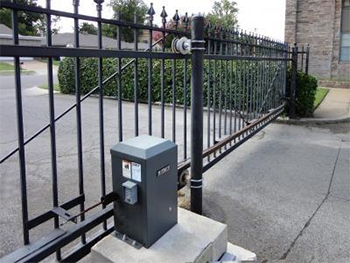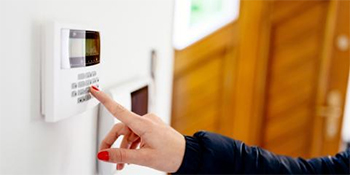Gate Motor Battery
In the vast majority of motors, batteries are used to drive the motor. To say that they are battery back-up motors is therefore incorrect, as the battery is always in use; not exclusively in the event of a power failure. If the battery is disconnected, the motor will not work. In the vast majority of motors, batteries are used to drive the motor. To say that they are battery back-up motors is therefore incorrect, as the battery is always in use; not exclusively in the event of a power failure. If the battery is disconnected, the motor will not work.
Is my gate motor battery unhealthy?
Most automatic gate users will not notice the gate motor beginning to move slower over time. This is something more likely picked up by a trained eye.
It is likely that you will only realise there’s an issue when the gate stops halfway through its cycle. This may occur within a year of replacing the battery.
Accurately Checking the Gate Motor:
Measuring the voltage of a battery under static conditions is generally not sufficient to determine if the battery truly is flat. Testing the voltage while the battery is under load is considerably more effective and accurate. The load, being a gate, garage or boom pole. Below, a short guide to assist the user to accurately diagnose a flat gate motor battery.
Required tools:
AVO meter or volt meter
Terminal screwdriver
an able assistant
Procedure
- Disconnect the two motor wires from the controller (PC board).The motor wires are generally rather thick and black and blue in colour. The terminals on the controller where the motor wires are connected will be marked ‘MOTOR’ or ‘MTR’
- Switch off the mains supply or unplug the charger from the controller, ensuring the voltage you read from the battery is not biased
- Engage your gate motor
- Now connect the motor wires straight onto the battery terminals. It doesn’t really matter which colour wire you connect to which battery terminal, as the polarity of the motor wires simply determine the motor direction.
- Unless the battery is completely depleted,the gate should start to move the instant you connect touch the motor wires to the terminals. Don’t be startled – this is what it’s meant to do!
- This is where the extra pair of hands comes in. Ask your assistant to measure the voltage across the battery terminals while the gate is moving, i.e. while you are holding the motor wires to the terminals
- The battery voltage should never drop below 11V DC under load. If it does, it is safe to say that your battery needs replacement
- A rule of thumb when dealing with a faulty battery is to also check the charging voltage. To do this, reconnect the charger or switch the mains back on, but now disconnect the battery (thick black and red) wires from the controller. Measure across the two terminals on the controller where the battery would normally be connected. For a 12V motor, this voltage should be approximately 14V DC, and approximately27V DC for a 24V motor







